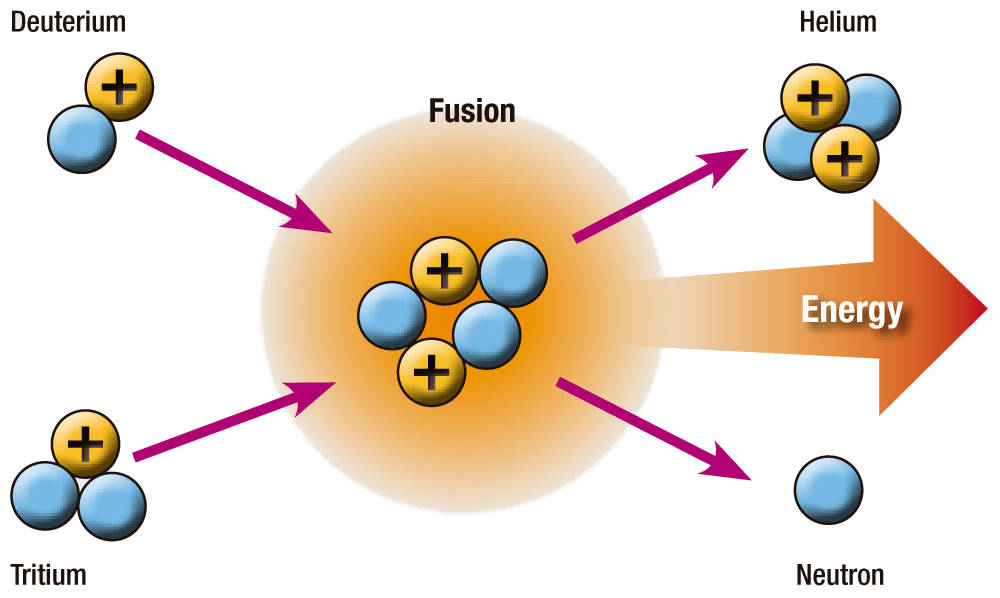Part 1 of 2 Parts
The pursuit of nuclear fusion as a clean, sustainable energy source is one of the most challenging scientific and engineering goals of our time. Commercial fusion power promises nearly limitless energy without carbon emissions or long-living radioactive waste.
However, achieving practical fusion power requires solving significant challenges. These challenges come from the heat generated by the fusion process, the radiation produced, the progressive damage to materials used in fusion reactors, and other engineering problems. Fusion systems operate under extreme physical conditions, and they generate data at scales that surpass the ability of humans to analyze.
Nuclear fusion is the process that powers our Sun and other stars. Existing commercial nuclear power relies on a process called fission, where a heavy chemical element nucleus is split to produce lighter ones. Nuclear fusion works by combining the nuclei of two light elements to make a heavier one.
While physicists have been able to initiate and sustain fusion for short periods of time, getting more energy out of the process than the energy supplied to power the fusion device has been a serious challenge. So far, this has prevented the commercialization of this hugely promising energy source.
Artificial intelligence (AI) is emerging as a powerful and critical tool for managing the challenges of fusion research. It holds promise for dealing with the complex data and convoluted relationships between different aspects of the fusion process. This development not only enhances our understanding of fusion but also accelerates the development of new reactor designs.
By addressing these challenges, AI offers the potential to significantly compress timelines for the development of fusion reactors. It will pave the way for the commercialization of nuclear fusion.
AI is reshaping fusion research across academic, government, and commercial sectors which is driving innovation and progress toward a sustainable energy future. It can play a transformative role in addressing the challenges of developing materials for fusion reactors. These new materials must be able to withstand extreme thermal and neutron environments while maintaining structural integrity and functionality.
By connecting datasets from different experiments, simulations, and manufacturing processes, AI models can generate predictions and insights that can be acted on. Machine learning is a form of AI that can significantly accelerate the evaluation and optimization of materials that could be used in fusion reactors.
These include the doughnut-shaped fusion reactors called tokamaks used in magnetic confinement fusion (where magnetic coils are used to guide and control hot plasma, allowing fusion reactions to occur). The extremely hot plasma can damage the materials used in the interior walls of the tokamak, as well as irradiating them.
Machine learning involves the use of algorithms (a set of mathematical rules) that can learn from experimental data and apply those lessons to unseen problems. Insights from this form of AI are extremely critical for guiding the selection and validation of materials able to endure the harsh conditions inside fusion reactors. AI has allowed scientists to develop detailed simulations that permit the rapid evaluation of materials performance and their configurations within a fusion reactor. This approach helps ensure long-term reliability and cost efficiency.
Fusion Reaction
Please read Part 2 next
Nuclear Fusion 108 – Artificial Intelligence And Nuclear Fusion – Part 1 of 2 Parts

